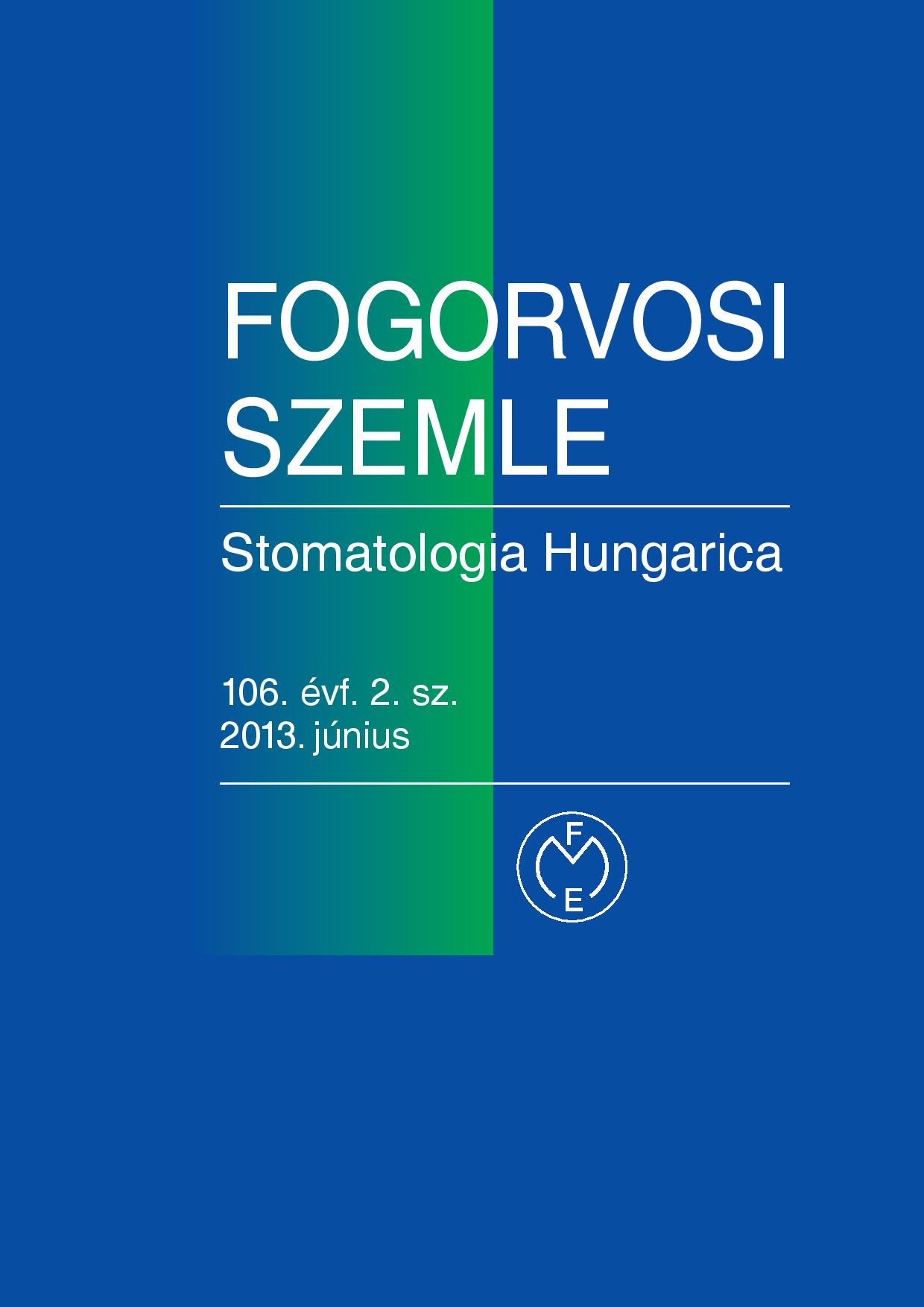Investigation of the venodilatory effect of vascular endothelial growth factor (VEGF) in rat gingiva
Abstract
VEGF induces proliferation of endothelial cells, stimulates angiogenesis, and increases vascular permeability in many organs. Nevertheless, we have only limited information about its role on gingival hemodynamics, especially in venules. Therefor the aim of this study was to assess the acute circulatory effects of VEGF on rat gingival venules by means of the following protocol.
Wister rats (n=63) were devided into five study groups after anesthesia; each animal received 10 μl of experimental
solution dripped onto the lower interincisal gingiva. The groups included: 1) saline control (after the experiment, gingi-
va was excised for VEGF receptor 2 [VEGFR2] immunohistochemistry); 2) VEGF (0.1, 1, 10, or 50 μg/ml); 3) VEGF2 re-
ceptor antagonist 5-((7-benzyloxyquinazolin-4-yl)amino)-4-fluoro-2-methyl-phenol-hydrochloride (ZM323881; 20 μg/ml); 4) ZM323881 (20 μg/ml) followed by VEGF application (50 μg/ml after 15 minutes); and 5) VEGF (10 μg/ml), these rats were premedicated with nitric oxide (NO) synthase blocker (NG-nitro-L-arginine-methyl-ester [L-NAME]; 1 mg/ml in drinking water) for 1 week before the experiment. Changes in gingival superficial venule diameter were measured by vital microscopy prior to and 1, 5, 15, 30, and 60 minutes after the administration of the experimental solutions.
According to our findings, VEGF dose-dependently increased the venular diameter compared to saline. ZM323881 alone did not cause any alteration. Premedication with ZM323881 or L-NAME decreased the dilatory effects of VEGF. Occassionally moderate VEGFR2 immunohistochemical labeling was observed in the wall components of the venules.
Concluding our results we can say, that there is no remarkable VEGF production under physiologic circumstances in rat gingiva, but VEGF is able to increase gingival blood flow through the activation of VEGF2 receptors and consequent NO release.
Copyright (c) 2021 Authors

This work is licensed under a Creative Commons Attribution 4.0 International License.


.png)




1.png)



